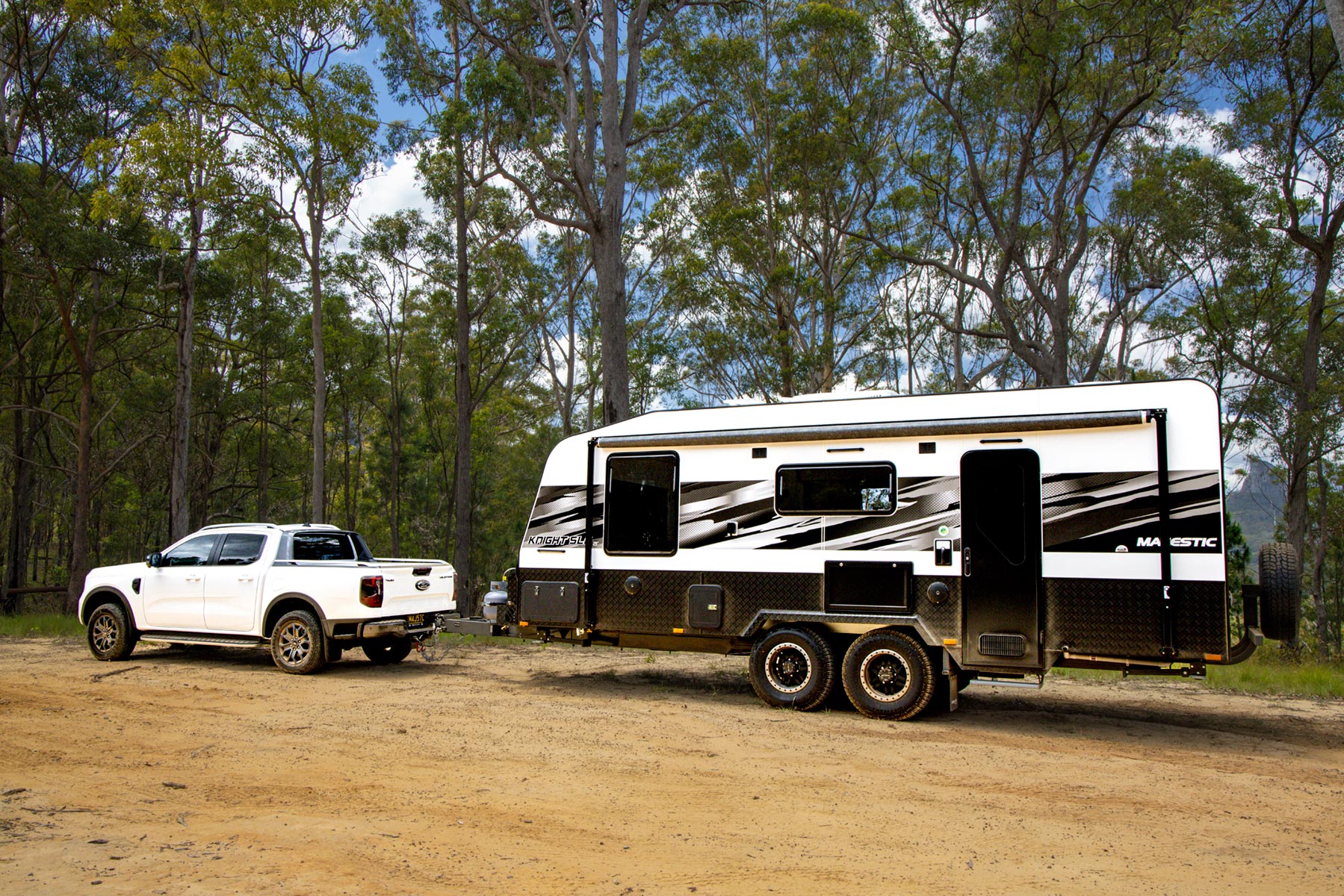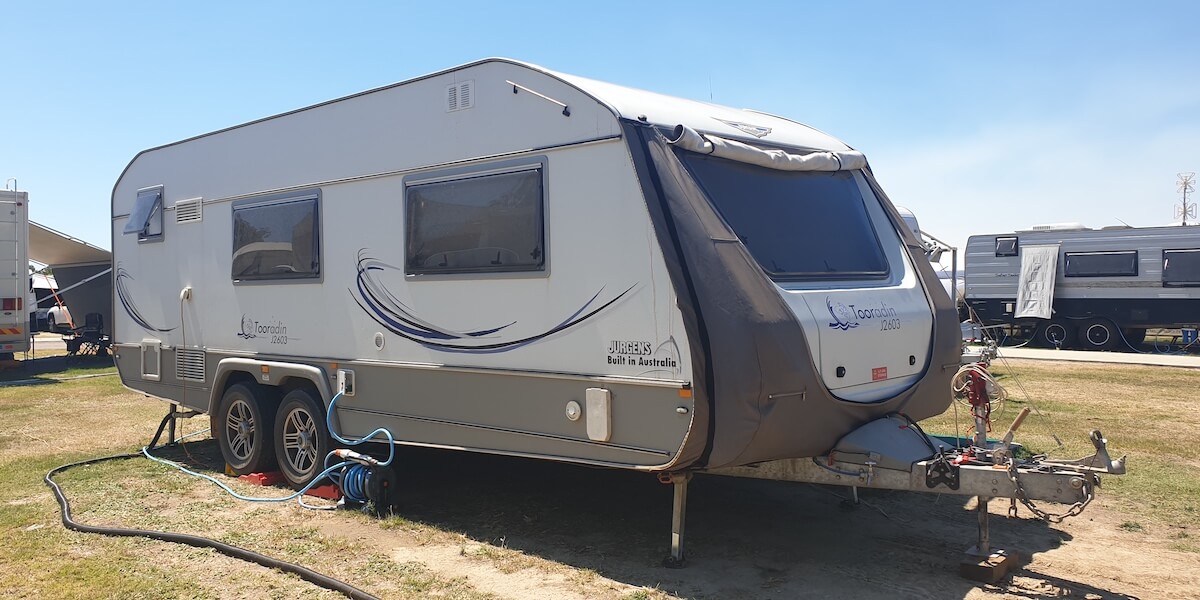Hitching up your pride and joy seems like a simple task, however, there are a few tricks that can make the entire process smoother.
Hitching up a caravan is not rocket science, although, it’s a bit like a pilot going through their safety checks — you need to ensure that everything is in order every step of the way. But once you’ve done this, the actual process is quite simple. A good idea is to have some sort of a ‘Hitching Checklist’ so, like the pilot, you can have the peace of mind that you’ve completed every step. Even after years of towing, a checklist can be a great help in ensuring that the rig is safely hitched and ready to go. When stationary, problems are easy to address — it’s when you realise a hitch error at 80km/h in traffic that the problem becomes difficult and dangerous to address while on the side of the road.
Before You Start
Before you begin hitching up your pride and joy, it’s important to do some homework to ensure that the vehicle and van match up. Never assume ‘it’ll be right’ — it’s always best to check. If your vehicle already has a towbar, don’t think it’ll automatically cope with towing the van you intend to hitch up. For example, an 1800kg-rated towbar won’t be much help towing your new 22ft Wonderland RV XTR 2200. A sticker or plate should be attached to the towbar assembly with the maximum weights and what vehicle the towbar is intended for. You should also consider your vehicle’s weight and wheelbase — how will hauling 3.2T affect your vehicle performance or will the van push your car around?
Now that you’re armed with the load ratings of the towbar, you need to verify the van’s ATM (Aggregate Trailer Mass) on the caravan manufacturer’s plate. This is the total maximum allowable weight supported by the van’s tyres when coupled to the towing vehicle, including any payload. Obviously, this weight must not exceed the maximum permitted towing weight for the vehicle and its towbar. Your vehicle might be rated to pull 3.5T, but you need to check vehicle limitations (such as combined mass) when hitching up a heavy tow. Ideally, after loading you should head to your nearest weighbridge to check that the weight is correct.
Additionally, the caravan’s ball weight should not exceed the vehicle’s maximum allowable ball weight. The caravan’s ball weight should also appear on the manufacturer’s plate. If not, you can calculate it by subtracting the GTM (Gross Trailer Mass — the maximum that can be supported by the van’s road wheels minus the jockey wheel) from the ATM. A towball weight scale is a great tool to check that the ball weight is correct.
Lastly, before you start, check if the vehicle manufacturer has any specific hitch instructions — to use load levellers or not, for example. And ensure that the vehicle’s electric plug matches the van’s seven-pin (or 12) plug. You should also check if the van requires an Anderson plug to power any other systems like an AL-KO ESC system.
REMEMBER: The handbrake in your tow vehicle must be on until you are fully hitched.
Measuring Up
One of the most vital factors of hitching up, which isn’t always as obvious as it should be, is ensuring you carry out the process on level ground. When you hitch up a van, the additional load on the rear of the vehicle should not cause it to drop more than about 20mm on its suspension (or cause a corresponding rise at the front wheels) otherwise steering, braking and trailer sway issues may arise. This is where load levelling devices come in — the load levellers transfer the additional weight from the rear wheels onto the front wheels.
Check the static height of the vehicle before and after you hitch up the caravan. This is best done with both the vehicle and van loaded as they would be for your trip. Measure from the lip of the wheel arch to the centre of the wheel or to the ground. You should also check that the towball is at the same height as your hitch when the caravan is sitting level — one method to match heights is to rotate the hitch receiver. And remember to ensure that the drawbar runs parallel to the ground.
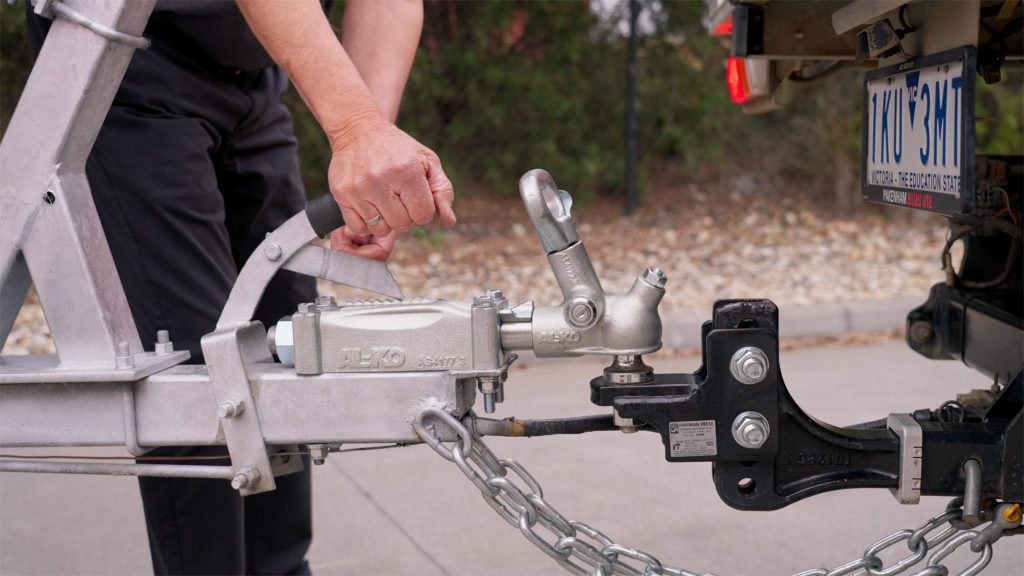
Reversing in
The subject of many tears and frustration, the reversing-in stage of hitching up despite sounding very straightforward requires a bit of finesse. The easiest way of course is to have another person guide you through the process from the outside of the tow vehicle. However, if you are by yourself and unable to have anyone assist, a reversing camera is the next best thing. Although it must be said that using a camera doesn’t mean it’ll be perfect. Ideally, having both a person and reversing camera makes for the smoothest process.
And remember, even if you have a reversing camera, you should still get out and survey the ground around the van before you back up, as you may find that a low tap or retaining wall is right in the way of where you intend to swing your vehicle. And you should still perform head checks as you reverse close to the A-frame — don’t keep your eyes glued to the screen the whole way.
Time to Get Hitched
When you have positioned the towball directly under the coupling, it’s time to wind down the jockey wheel. It’s unlikely for anything to go awry at this point, but it’s still recommended to position your feet as far away as possible from the A-frame and stand clear of items mounted to the drawbar.
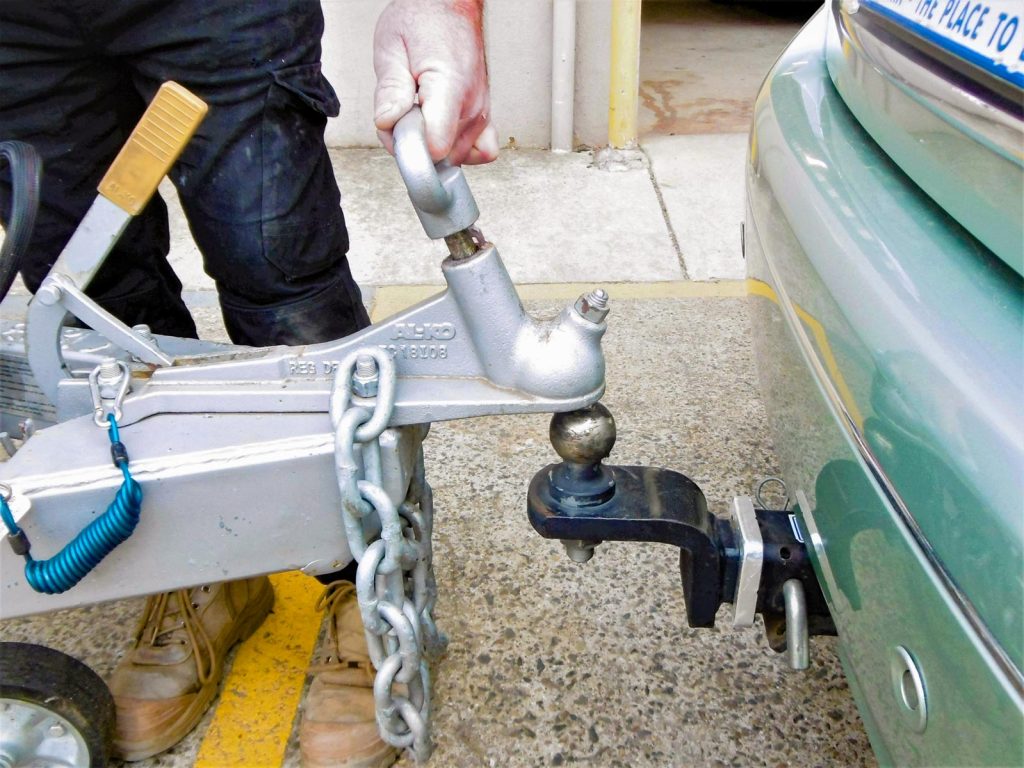
With the coupling handle pulled up the coupling seats onto the towball, once seated, the handle needs to engage with the towball. The handle lifts but it’s often stiff and may require a fair bit of effort to release, and then it’s often easiest to use the spring-loaded clip to keep the handle up as you engage the coupling. You must remember to release the coupling so that this handle is fully seated again to be sure the coupling is locked in place.
If you’re unable to retract the jockey wheel fully so that the tow vehicle takes all the weight, you may have a problem with the towball height. If you encounter this problem, check that the tow hitch is the legal height from the ground — the centre of the body of the ball coupling needs to be 350–460mm from the ground when laden. If the height is within spec, you will need to support the A-frame so that you can mount the jockey wheel in the position where it can be released as the vehicle takes the weight.
Chain and Lights
Now that you’ve got your coupling locked in and the jockey wheel raised and put away, it’s time to secure the safety chain(s) and plug in the trailer electrics. Ensure that the chain length is sufficient to reach the locating point(s) provided on the body of the towbar while being able to negotiate corners.
If the chain is too long and touches the ground, you can get links removed. You could also connect the shackle down the line into a more appropriate link. With two chains, ensure to cross the chains so that if the couple does come off, the chains will stop it from hitting the ground. Not dragging your chain is important because it only takes a very minor amount of wear to vastly reduce the chains’ capacity. If chains have been dragged and worn you should investigate replacing them.
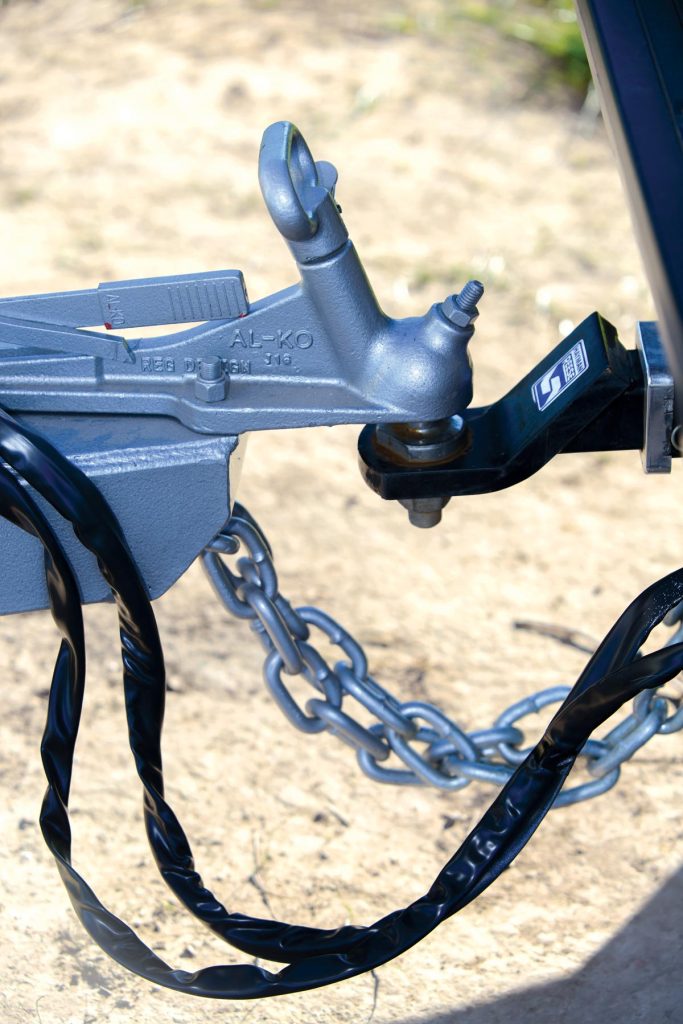
Wiring for caravan/camper trailer lights and electric brakes (where fitted) needs to be matched to the plug on the tow vehicle. If the connectors do not match between the vehicle and the van/trailer, an adaptor can be used. Ensure you’ve got enough slack in the van/trailer plug to allow for turning but not enough for it to scrape on the ground. And always remember to check that the lights are working before taking off, just because you are plugged in doesn’t mean all the lights are functioning.
REMEMBER: It is a legal requirement in all states that caravans over two tonnes GTM are fitted with a caravan breakaway system, or independent brakes that will immediately kick in if the van becomes disconnected from the tow vehicle. For more information on this, click here.
Measure and Level the Load
With the caravan hitched up, you can now redo your wheel arch measurements to see if the difference is more than 20mm and thus if either load levelling or load redistribution is required. Before you invest in load levellers, ensure that your caravan and tow vehicle loads are properly distributed. If possible, try to load the heaviest items over the axle of the caravan and ahead of the rear axle in the tow vehicle.
Ultimately, the angle of the hitch and the number of chain links used are crucial, and the way you tell if you’ve been successful is if the vehicle is level. Lastly, you don’t want to drive off with something undone, so before you head off, always make a five-point visual check of the handbrake, coupling, connection (electrical), chains and jockey wheel.

